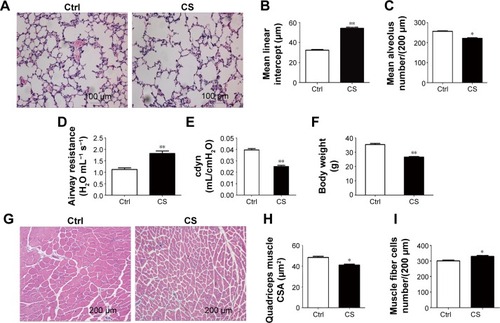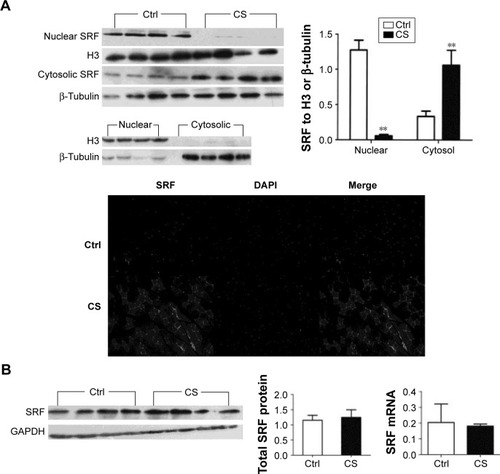Figures & data
Figure 1 CS-exposed mice develop the hallmarks of COPD and skeletal muscle atrophy.
Abbreviations: cdyn, dynamic lung compliance; Ctrl, control; CS, cigarette smoke; CSA, cross-sectional area; H&E, hematoxylin and eosin; MLI, mean linear intercept; MAN, mean alveolus number; LP, low-power field; SEM, standard error of mean.

Figure 2 SRF expression and subcellular redistribution.
Abbreviations: CS, cigarette smoke; Ctrl, control; DAPI, 4′,6-diamidino-2-phenylindole; GAPDH, glyceraldehyde 3-phosphate dehydrogenase; mRNA, messenger RNA; SRF, serum response factor; SEM, standard error of mean.

Figure 3 Reduced mRNA levels of Igf1, Acta1, and Myh2 mRNA in CS-exposed mice.
Abbreviations: CS, cigarette smoke; Ctrl, control; mRNA, messenger RNA; SEM, standard error of mean.

Figure 4 The expression of STARS and RhoA protein in CS-exposed and control mice.
Abbreviations: CS, cigarette smoke; Ctrl, control; GAPDH, glyceraldehyde 3-phosphate dehydrogenase; RhoA, ras homolog gene family, member A; STARS, striated muscle activator of Rho signaling; SEM, standard error of mean.

